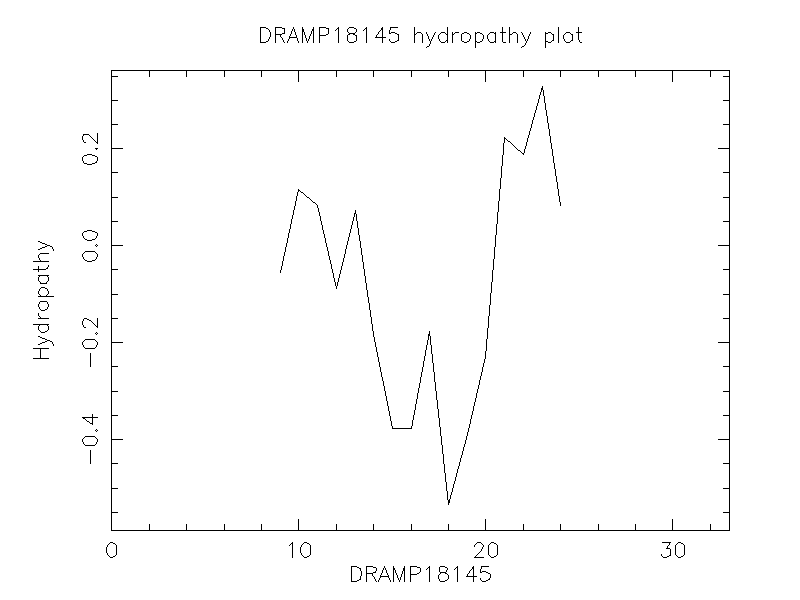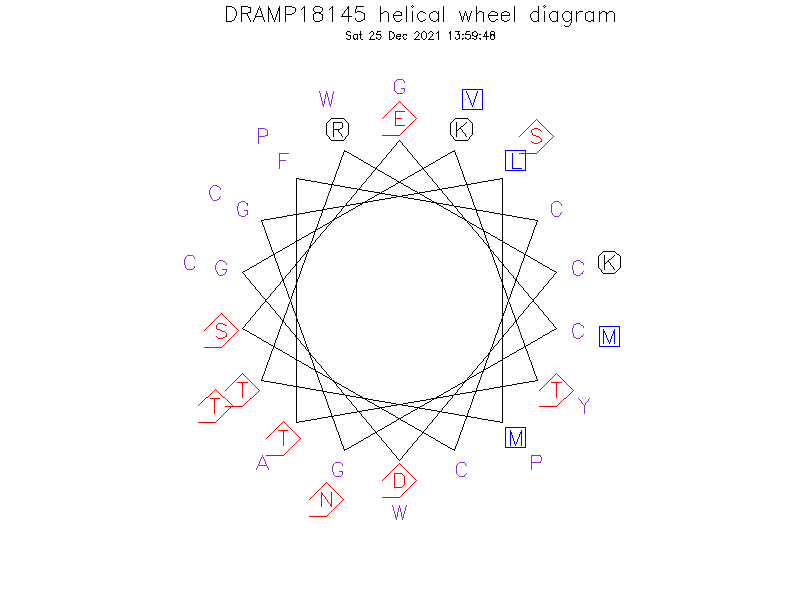General Information
-
DRAMP ID
- DRAMP18145
-
Peptide Name
- Toxin OAIP 3
-
Source
- Selenotypus plumipes (Australian featherleg tarantula)
-
Family
- Belongs to the huwentoxin-1 family
-
Gene
- Not found
-
Sequence
- ECGGLMTRCDGKTTFCCSGMNCSPTWKWCVYAP
-
Sequence Length
- 33
-
UniProt Entry
- P0DM67
-
Protein Existence
- Protein level
Activity Information
-
Biological Activity
- Insecticidal
-
Target Organism
- No MICs found in DRAMP database
-
Hemolytic Activity
-
- No hemolysis information or data found in the reference(s) presented in this entry
-
Cytotoxicity
-
- Not included yet
-
Binding Target
- Not found
Structure Information
-
Linear/Cyclic
- Not included yet
-
N-terminal Modification
- Not included yet
-
C-terminal Modification
- Not included yet
-
Nonterminal Modifications and Unusual Amino Acids
- Not included yet
-
Stereochemistry
- Not included yet
-
Structure
- Not found
-
Structure Description
- Not found
-
Helical Wheel Diagram
-
PDB ID
- None
-
Predicted Structure
- There is no predicted structure for DRAMP18145.
Physicochemical Information
-
Formula
- C313H493N83O88S10
Absent Amino Acids
- HQ
Common Amino Acids
- GLC
Mass
- 3637.24
PI
- 7.85
Basic Residues
- 7
Acidic Residues
- 5
Hydrophobic Residues
- 21
Net Charge
- +2
-
Boman Index
- -4615
Hydrophobicity
- 0.303
Aliphatic Index
- 72
Half Life
-
- Mammalian:30 hour
- Yeast:>20 hour
- E.coli:>10 hour
Extinction Coefficient Cystines
- 12865
Absorbance 280nm
- 201.02
Polar Residues
- 27
DRAMP18145

Comments Information
Function
- Probable ion channel inhibitor. Shows insecticidal activity when injected into mealwormS.
Literature Information
- ·Literature 1
-
Title
- SVM-based prediction of propeptide cleavage sites in spider toxinsidentifies toxin innovation in an australian tarantula.
-
Pubmed ID
- 23894279
-
Reference
- PLoS ONE 8:E66279-E66279 (2013)
-
Author
- Wong E.S. , Hardy M. C. , Wood D., Bailey T., King G.F.

